Understand Customer Flow and Focal Points
Before arranging products on your counter, observe how customers navigate the space. Identify the primary approach angle—whether from the entrance or a side aisle—and position the most eye-catching items in that line of sight. By directing attention to high-margin or seasonal merchandise, you can boost impulse purchases. Keep clearance around the register for transactions, but use adjacent counter space to showcase smaller add-ons.
Curate a Rotating Selection of Impulse Buys
Counters work best when they feature low-cost, high-appeal items that customers can grab while waiting. Rotate offerings frequently—such as travel-sized toiletries, sample-size snacks, or limited-time promotional products—to maintain novelty. Place these items in small bins or tiered trays near the register, ensuring they stay organized. Changing displays every two to four weeks keeps customers intrigued and encourages repeat visits.
Use Tiered Riser Trays and Small Display Fixtures
Adding vertical levels helps you fit more products without cluttering the counter surface. Small acrylic risers or tiered trays create distinct “stages” for various items—piece together a mix of price points and colors so each riser feels intentional. This approach not only increases visibility but also prevents items from getting lost in a flat spread. Place the tallest, most attention-grabbing items on the back riser, with shorter products toward the front for easy access.
Leverage a retail counter display for Versatility
For a streamlined way to both transact and merchandise, invest in a tailored retail counter display. Such fixtures are designed with built-in shelving, small glass display cases, or integrated risers—perfect for highlighting featured products while keeping them secure. By combining point-of-sale functionality with merchandising space, you minimize clutter and maximize visual appeal.

Incorporate Branded Signage and Clear Pricing
Clear, concise signage eliminates confusion and encourages customers to make quick decisions. Use small chalkboard signs or printed price tags with consistent branding—color, font, and logo—for a professional look. Highlight discounts or bundle deals to guide customers toward value-packed choices. When pricing is visible and legible, shoppers are more likely to add impulse items to their purchase.
Highlight Seasonal and Themed Displays
Tie counter merchandising to holidays, local events, or seasonal trends. During summer months, feature travel essentials or sunscreen samples; in winter, showcase gift cards, hand warmers, or stocking-stuffer ideas. A themed counter display creates a sense of urgency and relevance. Use small props—like miniature pumpkins in fall or decorative ornaments in winter—to reinforce the theme and make the display feel cohesive.
Maintain Cleanliness and Easy Restocking
A cluttered, dusty counter can discourage purchases. Establish a routine for wiping down the surface daily and straightening items every few hours. Assign a staff member to check stock levels frequently; when an item sells out, replace it with a fresh product or reposition adjacent items to fill the gap. Keeping merchandise neat and fully stocked sends a message of professionalism and reliability.
Encourage Cross-Selling with Complementary Pairings
Place items that naturally complement primary purchases adjacent to the register. For example, near the cash wrap for a coffee shop, display single-serve creamers, biscotti packets, or branded travel mugs. In a retail boutique, position small jewelry pieces or scarves next to the checkout area. By grouping complementary products, you make it easier for customers to add one more item to their cart without needing further assistance.
Track Performance and Optimize Layout
Use simple sales tracking to determine which counter items sell best and which sit untouched. Assign a code or use a small spreadsheet to record daily capture rates for each displayed SKU. After a few weeks of data, rearrange or replace underperforming products. Conversely, give top sellers prime counter real estate. Regularly analyzing performance helps you refine merchandising tactics and maximize revenue per square foot.
Train Staff to Leverage Counter Displays
Staff members play a vital role in promoting counter merchandise. Encourage them to mention featured items during the checkout process—such as suggesting batteries for electronic purchases or travel kits for on-the-go customers. Provide brief product training so they can answer quick questions. When employees are knowledgeable and proactive, counter displays become an active part of the sales conversation rather than static decorations.
By thoughtfully curating merchandise, maintaining a clean presentation, and leveraging a dedicated retail counter display, you transform your checkout area into a strategic point of sale. These tactics not only increase average transaction value but also reinforce brand consistency and leave customers with a memorable experience.
